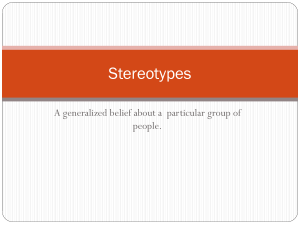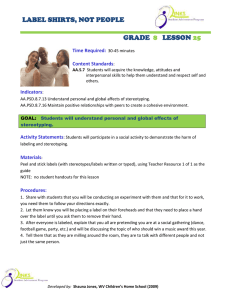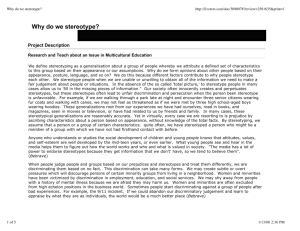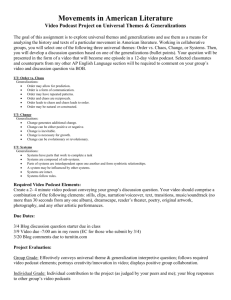Chapter 3
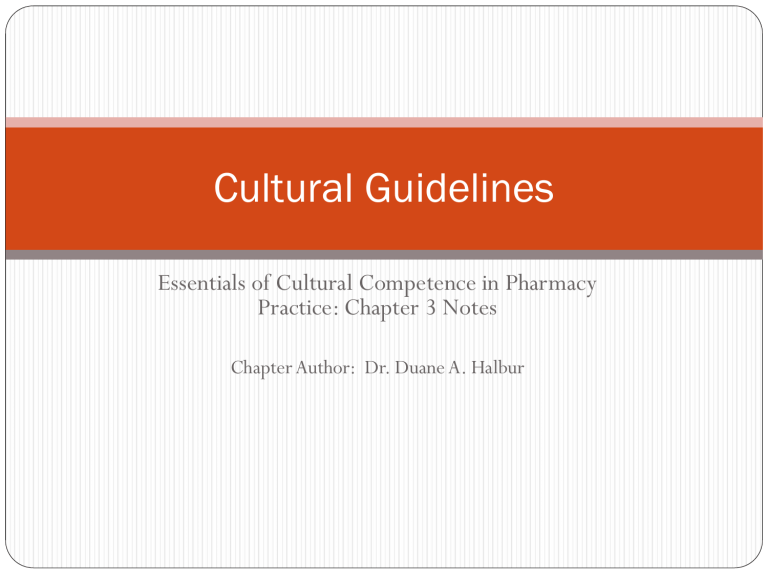
Cultural Guidelines
Essentials of Cultural Competence in Pharmacy
Practice: Chapter 3 Notes
Chapter Author: Dr. Duane A. Halbur
Learning Objectives
1. Understand various definitions of culture related to health care.
2. Define stereotyping as unique from making generalizations.
3. Articulate how within-group differences impact the work of a pharmacist.
Do you see what I see?
How many legs does the elephant have?
Group Differences
Ample research indicates that within-group differences are more significant than between-group differences.
Thus, the information contained in upcoming chapters should be viewed as generalizations while keeping the individual patient at the forefront.
Within-Group Differences
It is important to look at how individuals differ within a cultural group even though they may share some common traditions and characteristics.
This is especially true when providing pharmaceutical care where meeting the needs of individual patients is a major goal.
Cultural Competence
One component of cultural competence is being “able to recognize differences, identify similar patterns of responses, avoid stereotyping by acknowledging variations, and balance his or her own caring actions by recognizing differences and avoiding stereotyping.”
Stereotypes
Unfortunately, it is easy to stereotype people on the basis of their race, ethnicity, or culture.
Many stereotypes are prejudices.
Stereotyping ultimately involves understanding or defining a group of people in such a way that the observer does not go beyond a narrow description that has been indiscriminately applied to all people in a given group.
Generalizations
Generalizations can help one to understand a cultural group.
They are a way to temporarily categorize information for pragmatic purposes.
Generalizations are useful starting points for data gathering and assessment.
To stereotype is to place all people who have certain characteristics in a category without further consideration.
Generalization, on the other hand, is a necessary starting point for classifying information about people.
Key Domains of Culture
Culture, as defined by Purnell & Paulanka, is “…the totality of socially transmitted behavioral patterns, arts, beliefs, values, customs, life-ways, and all other products of human work and thought characteristics of a population of people that guide their worldview and decision making.”
Components of Cultural Primers
Each of the cultural primer chapters contain 8 areas:
Overview
Communication styles
Family roles
Workforce issues
Biocultural ecology and relevant diseases
High-risk behaviors
Nutrition
Child-rearing practices
Reflection Questions
3.
4.
1.
2.
What cultures are you most interested to learn about?
What cultures do you believe you have the least understanding about?
How would you define culture?
How important do you think cultural factors are in pharmacy practice?


